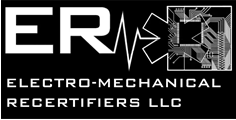The two most common ways to erase a hard drive is by formatting or wiping the drive. In this article we’ll look at both approaches and discuss security issues and methods to clean the hard drive using format and disk wipe techniques.
Perhaps you have decided to forgo system upgrades and get rid of your computer system and purchase a new one. If you’ve decided to donate your old computer to a charity, local group or school, it’s extremely important to make sure your computer’s hard drive is completely free of data.
In the “no good deed ever goes unpunished” department, you need to ensure that you don’t donate more than you planned. The last thing you want is to pass on a PC when sensitive business information, or even personal information such as stored passwords, personal documents and credit card numbers that could be retrieved. When you donate a computer, you really don’t know where it may end up or if it will go through the hands of a malicious person with the capability to restore previously recorded and deleted data.
There are many ways to go about making sure your data can never be retrieved. Obviously, you can choose to physically smash the hard drive, but there are alternatives that enable you to keep the system intact so you can donate a complete system.
The two most common ways to erase a hard drive is by formatting or wiping the hard drive. In this article we’ll look at both approaches and discuss methods to clean the hard drive using format and disk wipe techniques.
Erasing and Formatting: Just Not Secure Enough
Simply erasing all the data on your hard drive and formatting it is not enough security. You can spend hours going through your hard drive and deleting all the files and documents you want, but using the delete key on your keyboard in Windows will only remove the shortcuts to the files making them invisible to users. Deleted files still reside on the hard drive and a quick Google search will show many options for system recovery software will allow anyone to reinstate that data.
Formatting the hard drive is a bit more secure than simply erasing the files. Formatting a disk does not erase the data on the disk, only the address tables. It makes it much more difficult to recover the files. However a computer specialist would be able to recover most or all the data that was on the disk before the reformat.
For those who accidentally reformat a hard disk, being able to recover most or all the data that was on the disk is a good thing. However, if you’re preparing a system for retirement to charity or any other organization, this obviously makes you more vulnerable to data theft.
For some businesses and individual users, a disk format may be something you consider secure enough, depending, of course, on the type of data and information you saved to your computer. As long as people understand that formatting is not a 100 percent secure way to completely remove all data from your computer, then they are able to make the choice between formatting and even more secure methods. If you have decided a disk format is a good choice, at the very least to do a full format rather than a quick format.
Click here to read the full article from its original source.

Recent Comments